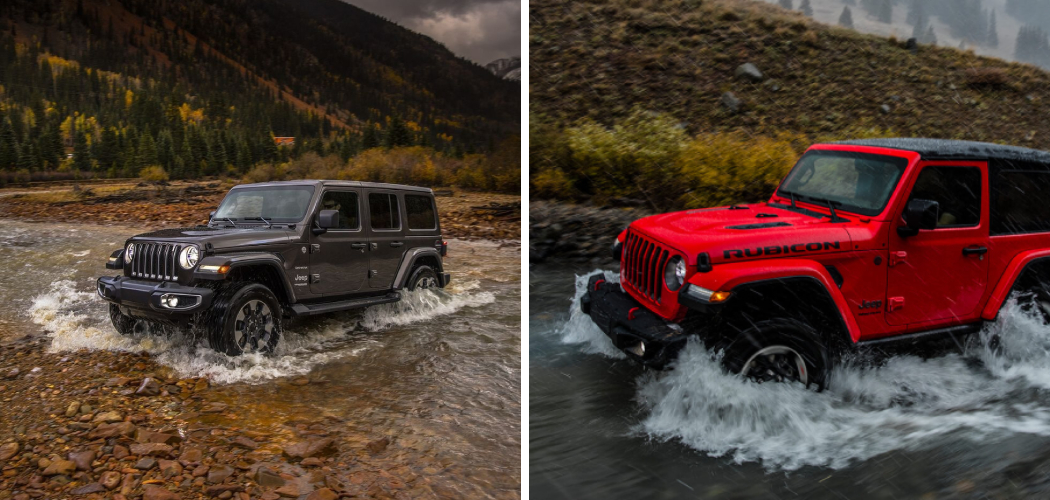Jeep is a popular four-wheel drive vehicle that is known for its off-road capabilities. While it can handle tough terrain and inclement weather conditions, driving in heavy rain requires some specific skills and precautions to ensure safety. In this guide, we will discuss how to drive jeep on rainwater.

Understanding the Impact of Rain on Driving Conditions
1 . Reduced Visibility
One of the most obvious effects of rain on road conditions is reduced visibility. Heavy rain and fog can make it difficult to see the road ahead, other vehicles, and potential hazards.
This is especially true at night when headlights from other vehicles reflect off the wet road surface, causing glare and reducing visibility even further. To combat this, drivers should use their headlights in low-visibility conditions and adjust their speed accordingly to ensure they can see and react to potential dangers.
2 . Increased Stopping Distance
Rain can significantly increase the stopping distance for vehicles. This is because water on the road surface reduces tire traction, making it harder for drivers to brake effectively. According to the AAA Foundation for Traffic Safety, wet roads can increase stopping distance by up to two times, and snowy or icy roads can increase it by up to ten times. Drivers should leave extra space between themselves and the vehicle in front of them to account for this increased stopping distance.
3 . Hydroplaning
Hydroplaning occurs when a layer of water builds up between tires and the road surface, causing the tires to lose contact with the road and making steering and braking difficult. This can happen at speeds as low as 35 mph, making it a serious concern for drivers in rainy conditions. To prevent hydroplaning, drivers should slow down, avoid standing water on the road, and ensure their tires are properly inflated.
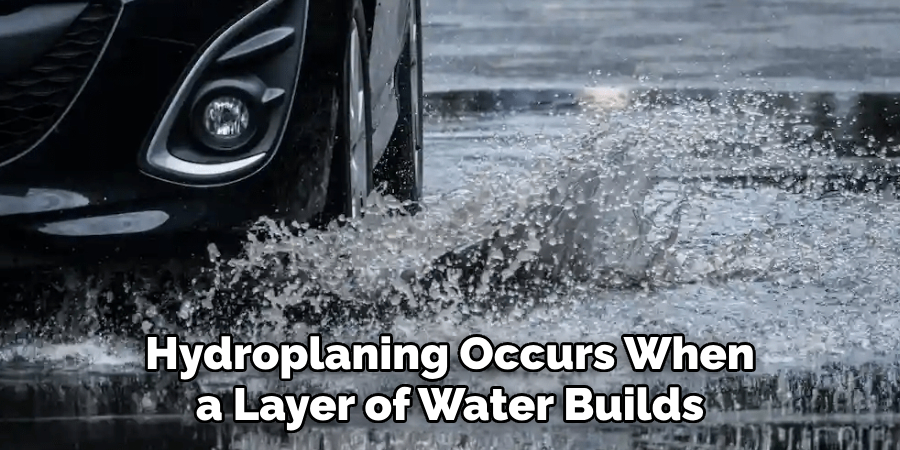
4 . Reduced Traction
In addition to increasing stopping distance, rain also reduces traction on the road. This means that drivers may have difficulty accelerating and maintaining control of their vehicle. It is important for drivers to avoid sudden acceleration or braking in wet conditions and to maintain a safe speed to prevent loss of control.
5 . Flooding
Heavy rain can also lead to flooding on roads, which can be dangerous for drivers. Flooded roads can hide hazards, such as potholes or debris, and can even sweep away smaller vehicles. If a driver encounters a flooded road, they should turn around and find an alternate route to their destination.
Preparing Your Jeep for Rainy Conditions
1 . Tire Maintenance
One of the most important things you can do to ensure your Jeep is ready for rainy conditions is to properly maintain your tires. This includes checking the tire pressure regularly, rotating your tires every 5,000 miles, and inspecting them for any signs of wear or damage. In addition, it’s recommended to switch to all-terrain or mud terrain tires if you live in an area with heavy rainfall.
2 . Wiper Blades
Worn or damaged wiper blades can significantly decrease your visibility during rainy conditions. It’s important to regularly inspect and replace your wiper blades if necessary. You can also apply a rain repellent to your windshield to help improve visibility in heavy rain.
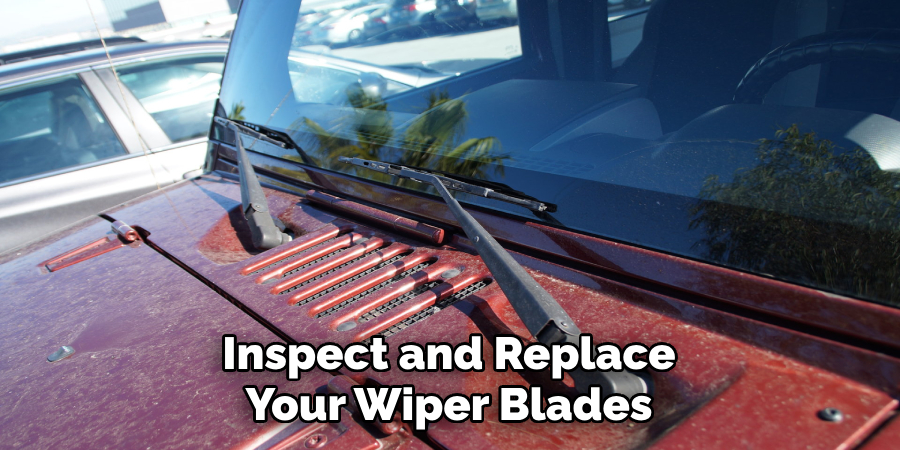
3 . Check Your Brakes
Rainy conditions can make roads slippery, which means your brakes need to be in top condition. Make sure to check the brake pads and rotors for wear and tear, and replace them if needed. Additionally, it’s recommended to get your brakes checked by a professional mechanic at least once a year.
4 . Test Your Lights
Properly functioning headlights, taillights, and turn signals are crucial for safe driving in rainy conditions. Make sure to regularly check and replace any burnt-out bulbs, and consider upgrading to brighter or LED lights for better visibility.
5 . Inspect Your Suspension
A properly functioning suspension system is essential for navigating through wet and slippery roads. Make sure to regularly inspect your shocks, struts, and other suspension components for wear and tear, and replace them if necessary. It’s also a good idea to get your suspension system checked by a professional mechanic.
6 . Protect Your Interior
Rainy conditions can also take a toll on the interior of your Jeep. Consider using waterproof seat covers to protect against spills and stains, and invest in all-weather floor mats to prevent dirt and water from damaging your carpets.
7 . Check for Leaks
Before heading out in rainy conditions, it’s important to check for any potential leaks in your Jeep. This includes checking the seals around your windows and doors, as well as the roof and sunroof if applicable. If you do notice any leaks, make sure to get them repaired promptly to prevent water damage to your interior.

10 Tips on How to Drive Jeep on Rainwater
1 . Increased Following Distance
One of the most important adjustments to make when driving in the rain is increasing your following distance from other vehicles. This is because wet roads reduce traction and increase braking time, which means you may need more space to safely stop or slow down.
It is recommended to at least double the normal following distance of three seconds, making it six seconds between you and the car in front of you. This will give you more time to react if the car in front of you suddenly stops or slows down. This is especially important when driving in heavy rain, as visibility can be reduced and roads may become flooded.
2 . Slower Speeds
Another adjustment to make when driving in the rain is slowing down your speed. Wet roads increase the chances of hydroplaning, where your tires lose traction and skim over the surface of the water. This can cause you to lose control of your vehicle, making it very dangerous. By slowing down, you reduce the risk of hydroplaning and give yourself more time to react to any potential hazards on the road.
3 . Use Headlights
It is important to use headlights when driving in the rain, even during the day. Rain can reduce visibility significantly, making it difficult for other drivers to see you on the road. By using headlights, you increase your visibility and make it easier for other drivers to spot your vehicle. In some states, it is actually a law to have your headlights on when driving in the rain.
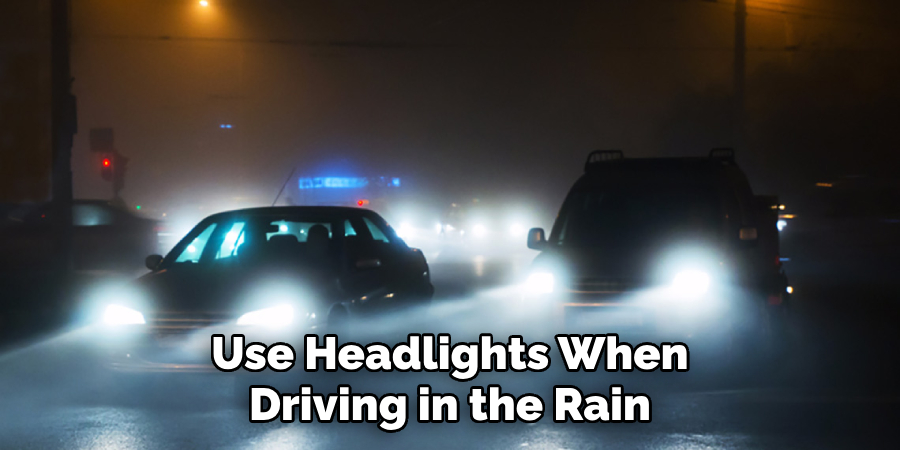
4 . Avoid Cruise Control
Using cruise control may seem convenient, but it is not recommended when driving in the rain. Cruise control can cause your car to accelerate unexpectedly if you hit a patch of water, increasing the risk of hydroplaning. It is best to maintain full control of your vehicle at all times and avoid using cruise control in wet weather.
5 . Stay Calm and Alert
The most important adjustment to make when driving in the rain is to stay calm and alert. Rainy conditions can be stressful and make it harder to focus on the road, but it is important to remain attentive at all times.
Keep both hands on the wheel and avoid any distractions while driving in wet weather. If you feel overwhelmed or unsafe, find a safe spot to pull over until the weather improves. It is always better to arrive at your destination safely, even if it means taking a break from driving in bad weather conditions.
6 . Avoiding Sudden Maneuvers
One of the keys to safe driving in the rain is avoiding sudden maneuvers. This includes any sudden turns, lane changes, or braking. Wet roads reduce traction and make it more difficult to control your vehicle, so it is important to avoid any sudden movements that could cause you to lose control. Instead, try to anticipate any potential hazards on the road and make smooth and gradual adjustments.
7 . Check Your Tires
Before driving in the rain, it is important to check your tires and make sure they have enough tread. Bald or worn out tires can increase the risk of hydroplaning and make it more difficult for you to control your vehicle. If needed, replace your tires before driving in wet weather conditions.
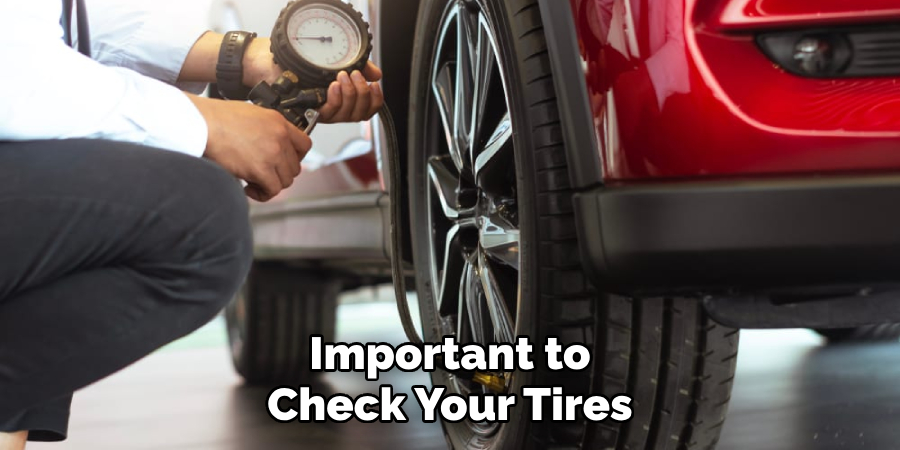
8 . Keep Windshield Wipers in Good Condition
Clear visibility is crucial when driving in the rain, so it is important to keep your windshield wipers in good condition. Replace them if they are worn out or not working properly. Also, make sure to regularly clean your windshield and add windshield washer fluid as needed.
9 . Be Cautious of Standing Water
When driving in the rain, be cautious of standing water on the road. It can be difficult to judge the depth of the water, and driving through deep standing water can cause damage to your vehicle’s engine and electrical systems. If possible, try to avoid driving through standing water and find an alternate route.
10 . Consider Taking a Different Route
If you know that heavy rain is expected during your commute, it may be wise to consider taking a different route. This could mean avoiding highways or main roads that are more prone to flooding and traffic accidents during wet weather conditions. Planning ahead and choosing a safer route can help reduce stress and make your drive in the rain much more manageable.
Overall, adjusting your driving techniques in the rain is crucial for ensuring your safety on the road. By following these tips, you can reduce the risk of accidents and arrive at your destination safely. Remember to always stay calm and alert, and never hesitate to pull over if weather conditions become too dangerous to continue driving. Safe travels!
Post-rain Jeep Maintenance Tips
1 . Assessing Trail Conditions
One of the first things you should do after a rainstorm is assess the trail conditions. Heavy rains can wash out trails, create new obstacles, and completely change the terrain. It’s important to take note of any potential hazards or challenges before heading out on your next Jeep adventure.
2 . Inspect Your Tires
After driving through muddy terrain, it’s essential to check your tires for any damage or debris. Remove any stones or sticks stuck in the treads and look for signs of wear and tear. If you notice any significant damage, it’s best to replace your tires before hitting the trails again.

3 . Clean Your Jeep
Mud, dirt, and debris can accumulate on your Jeep after a rainy off-roading trip. It’s important to thoroughly clean your Jeep to prevent any potential damage or corrosion. Pay special attention to the undercarriage, as this is where most of the mud and debris can get stuck.
4 . Check for Water Damage
Driving through deep puddles or flooded areas can potentially lead to water getting into your Jeep’s engine or other sensitive components. It’s essential to check for any signs of water damage, such as rust or corrosion, and address them immediately.
5 . Change the Oil
Heavy rain can cause your Jeep’s oil to become contaminated with water. It’s important to change your oil after off-roading in wet conditions to prevent any potential engine damage. Additionally, check all other fluids and top them off as needed.
6 . Inspect the Suspension
Off-roading in wet conditions can put additional strain on your Jeep’s suspension. It’s important to inspect all suspension components for any signs of wear and tear or damage. Replace any worn or damaged parts before hitting the trails again.
7 . Dry Out the Interior
If you got caught in a downpour with the top off, it’s essential to dry out your Jeep’s interior thoroughly. Use a wet-dry vacuum to remove any standing water and leave the windows open to air out the interior. This will prevent mold and mildew from forming.
8 . Cleaning Mud and Debris from the Engine Bay
After off-roading in muddy conditions, it’s crucial to clean out any mud and debris that may have made its way into your engine bay. Use a hose or pressure washer on a low setting to remove the mud and debris without causing damage. It’s also helpful to use a degreaser to break down any stubborn dirt or grime.
Frequently Asked Questions
Can I Drive My Jeep on Rain Water?
Yes, you can drive your jeep on rain water. Jeeps are designed to handle various types of terrain and weather conditions, including driving through shallow bodies of water such as puddles or streams. However, it is important to exercise caution and use common sense when doing so.
How Do I Prepare My Jeep for Driving on Rain Water?
Before driving on rain water, it is important to check your jeep for any potential issues that could arise. This includes inspecting your tires, brakes, and electrical systems to ensure everything is in proper working order. It is also recommended to lower your tire pressure slightly for better traction.
What Should I Do if My Jeep Gets Stuck in Rain Water?
If your jeep gets stuck in rain water, the first thing to do is to stay calm. Avoid revving your engine as this can cause further damage. Instead, try to gently reverse out of the water or use a tow strap to pull yourself out. It is also important to have a winch or recovery equipment on hand in case of emergencies.
Is it Safe to Drive My Jeep Through Deep Water?
No, it is not safe to drive your jeep through deep water. While jeeps are designed to handle shallow bodies of water, they are not meant for deep water crossings. Driving through deep water can cause serious damage to your jeep’s engine and electrical systems.
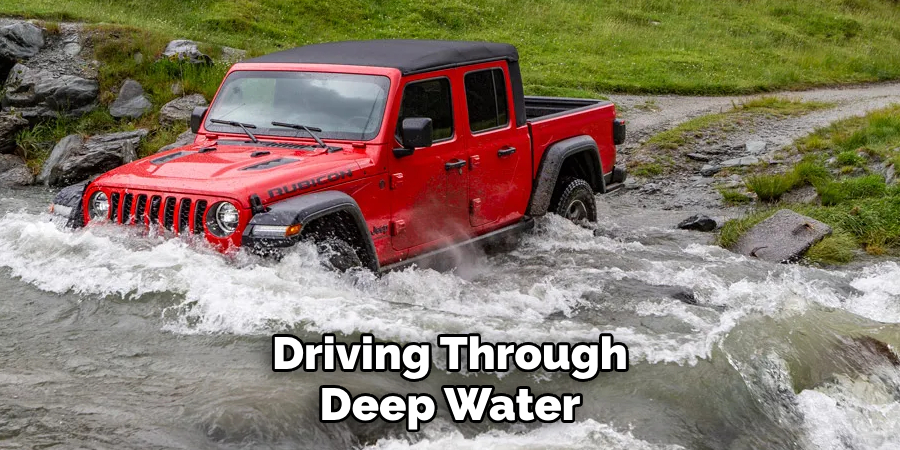
How Can I Prevent Water Damage to My Jeep?
To prevent water damage to your jeep, it is important to avoid driving through deep water or excessively deep puddles. It is also recommended to install a snorkel kit, which raises the height of your jeep’s air intake and allows for safe water crossings. Regularly inspecting and maintaining your jeep’s seals and gaskets can also help prevent water from entering the vehicle.
Can I Drive My Jeep on Saltwater?
No, it is not recommended to drive your jeep on saltwater. Saltwater can cause significant damage to your jeep’s metal parts and electrical systems. If you do find yourself driving through saltwater, be sure to thoroughly rinse off your jeep with fresh water as soon as possible afterwards.
Conclusion
Now you know how to drive jeep on rain water, it’s time to put your knowledge into practice! Remember, safety always comes first so make sure you follow these tips before trying out this skill. Also, it’s essential to take your time and practice in a safe environment before driving on rainwater in the real world.
Don’t forget to regularly check your jeep for any signs of wear and tear, especially after driving on rainwater. It’s also important to stay aware of your surroundings and be prepared for unexpected situations while driving.

